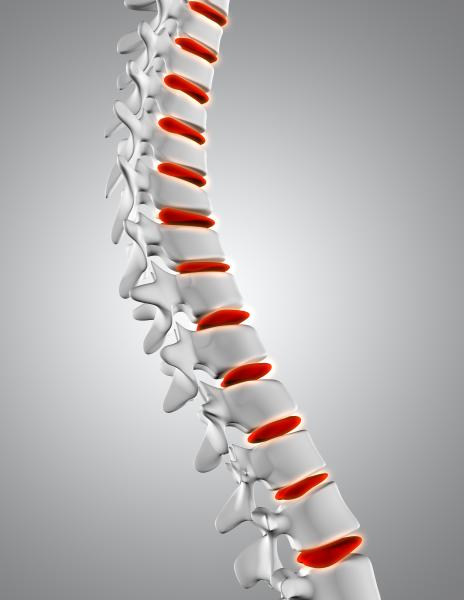Section:
 KEYWORDS
KEYWORDS
- Spinal circuits
- Neuromodulation
- Stochastic resonance
- Synchronous stimulation
- Cortico-spinal input
- Multi-electrode array
- Epidural interface
- Transcutaneous stimulator
- Spinal cord injury
- Neuromotor disturbance
Description
The SPINAL Laboratory is composed of neurophysiologists and neuroscientists who study the mechanisms at the base of spinal cord injury and other neuromotor disorders through the development and analysis of innovative technologies.
The laboratory specifically identified stimulating protocols delivered through a new multi-electrode epidural interface that stimulate the spinal cord in the perspective to allow persons with a spinal injury to restore motor and autonomic functions by using a more specific and effective impulse.
The un-met need is to recover motor control and the approach of the Laboratory in this field is completely new: a technology that simultaneously delivers multiple and highly varying electric input to different sites of the injured spinal cord.
In the majority of spinal cord injuries, when the brain sends a command of movement, the physiological signal is lost at the level of injury. The approach used in the Laboratory adopts a stimulating device positioned on the injured cord that makes the spinal cord more responsive even to weak incoming messages from the brain. This way, a sort of reinforcement is created for the transmission of signals that can thus continue beyond the site of damage to reach their physiological target.
The peculiarity of the technology is to simultaneously use each electrode of the device to deliver variable targeted stimuli to the different regions of the spinal cord. While the stimuli currently used in clinics are stereotyped, namely there is no variability among impulses, the technology used in the laboratory provides stimuli varying in both amplitude and frequency. These variable impulses work better because each neuron likely receives a message that is better tailored upon its own excitability threshold.
The spot where the technology has been placed was carefully studied and assessed: this precise localization of the device might support repair mechanisms within damaged spinal cords.
So, the Laboratory investigates whether any electrical and pharmacological potentiation of synaptic transmission in the spinal cord can facilitate weak descending input to coordinate the recruitment of flexor and extensor muscles in hind limbs, proposing a unique multi frequency stimulation paradigm that includes highly varying waveforms: a novel neuromodulation method called Dynamic Stimulation.
Scientific Background
Giuliano Taccola leads the laboratory of Applied Neurophysiology and Neuropharmacology at the Regional Spinal Center in Udine. He is an Assistant Professor in Pharmacology at Neuroscience Area in SISSA (Italy).
He collaborated with scientists worldwide to study the physiology of spinal motoneurons, the development and plasticity of spinal networks, their pharmacological and electrical neuromodulation, as well as the cellular, circuit and systems mechanisms at the base of spinal cord injury and other neuromotor disorders.
Taccola’s lab has a vast experience on in vitro spinal cord preparations isolated from neonatal rodents, performing intracellular recordings from single motoneurons using microelectrodes, AC- and DC- coupled recordings from spinal roots and peripheral nerves, and whole cell patch clamp recordings from spinal inter- and moto- neurons performed in current/voltage clamp modes. Since 2015, he researches also on preclinical models with and without a spinal cord injury, in a still ongoing collaboration with UCLA and the University of Leeds, where he worked from 2015 to 2018 with a Marie Skłodowska-Curie Global Individual Fellowship.
This line of research combines cutting-edge in vivo and in vitro electrophysiology, neuropharmacology, multi-electrode interfaces and neuroprosthetics, and behavioural neuroscience.
As part of this collaboration, Giuliano Taccola explores these new pharmacological and electrical stimulating protocols to restore motor functions in preclinical rodent models of spinal cord injury.
Results
Technology Readiness Level (TRL) 4 - technology validated in lab
The laboratory has developed the new approach, some first preclinical tests have been conducted and a multi-electrode interface to be applied to the spinal cord has been developed by the bioengineers of the University of California.
Advantages and Innovative features
This expertise allows to create important clinical applications.
Main advantages:
- Customized and targeted stimuli
- Creation of a new device for Neurorehabilitation
- Electrical stimulation for future studies by neurophysiology and neuropharmacology laboratories
- The approach has proven effective not only in chronic situations, but also in acute ones
- Reduction of social costs, due to a high incidence of spinal cord injuries on the youngest and most productive population and the dramatic and disabling consequences, which can hardly be alleviated by the very few and controversial therapeutic treatments
- Impact on the third sector, mostly for technological and socio-economic advancements
Potential Applications
The approach of the Laboratory could be used for
- development of new breakthrough and versatile technologies
- pharmacological treatment
- different motor disorders (e.g. aging, bladder disorders)
- prototypes for clinical trials
- pain treatment
- muscle stimulation / fitness


